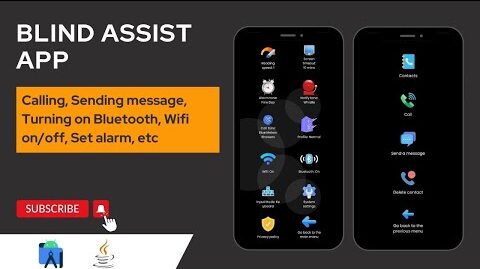Many visually impaired students in Africa still struggle to access braille texts, leading to high school dropout rates due to slow progress in assistive technology. However, a team of developers from Uganda has created the Blind Assistant app, which can read documents aloud to help address this issue.
Susan Nakajje, one of the co-founders of the Blind Assistant app, shared that they initially teach users how to use smartphones. “The introduction of the Blind Assistant app was met with enthusiasm, as it allowed users to read independently, even during exams without having to wait for texts to be converted to braille,” she said.
Sir Apollo Kaggwa Secondary School in central Uganda was among the first to offer training for its 24 visually impaired students and their aides. The application, developed locally by Suzie Water Harvesting Co., is one of several accessibility apps that utilize the capabilities of a smartphone’s camera, portability, and connectivity.
Due to a lack of resources, many of these students have needed to depend on their peers for everyday help, such as reading and navigating to classes. Ahmad Muwonge, a visually impaired student, expressed, “It’s been challenging to read notes since our peers are often too busy, and time slips away. However, the Blind Assistant app has addressed these issues, allowing us to read independently and at our own pace.”
Sixteen-year-old Wene Paida Isabella, who experienced partial vision loss at 13 due to glaucoma, is currently part of a student group receiving digital training on how to use the Blind Assistant app for reading assistance.
The head of the special needs unit at Sir Apollo Kaggwa Secondary School, Michael Mambo, explained that with the help of assistive technologies such as the Blind Assistant, students can scan texts without the need for braille translation. “They use the audio version to read the text and respond to questions, which will save time for both students and teachers during assessments,” he said.
According to developers, the majority of students did not have access to such technologies, prompting the development of a local solution. The 2014 national census in Uganda indicated that there are an estimated 250,000 visually impaired individuals in the country, with approximately 1,500 of them being schoolchildren. Developers in the community are working on a solution to provide over 1,000 students in Uganda with access to these technologies due to the lack of resources among students.

